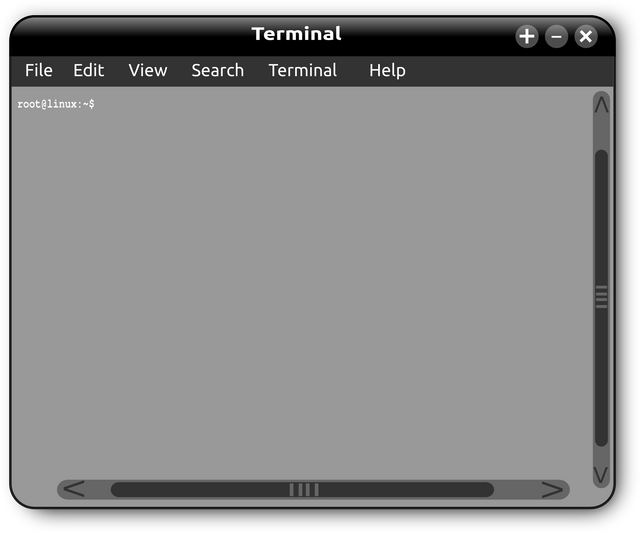
It pays to know how to use some of your Mac’s more powerful features, even if they seem intimidating and complex at first glance. This can help you identify and fix problems, automate repetitive tasks, and speed up long-winded workflows.
- Terminal
Text-based input using a command prompt will never feel as user-friendly as your Mac’s graphical user interface (GUI), but that doesn’t mean you should avoid it altogether. You can use the Terminal app (found under Applications , Utilities) to do just about everything on your Mac, from basic file operations to blacklisting websites or changing system preferences for which there is no toggle.
We’ve put together a list of 16 Terminal commands that every Mac user should know, which includes all the basics like navigating the file system, using flags (which modify how commands behave), and running commands as root (or super user). There are also tricks that you can perform using the Terminal, like adding blank spaces to the dock or hiding files.

- Automator
is a powerful, visual tool for automating repetitive tasks and creating shortcuts you can use over and over again. One of the most useful Automator features is the ability to add automations to your Mac’s “Quick Actions” right-click context menu.
These are context-aware, so if you create an automation that only applies to image files it will only show up when you’ve selected an image file. We use this extensively to batch resize images to preset sizes, ready for publishing on How-To Geek. You could also create Automations to upload files to a destination of your choice, install an APP file to the Applications folder, or install font files to your font library.
3.Shortcuts
The Shortcuts app is a bit like Automator in that it can be used to run powerful workflows and automations that are built using a drag-and-drop interface. Shortcuts isn’t as powerful as Automator in terms of raw utility, but the app is a bit easier to work with and the results can be easily shared with other users.
We’ve got a list of eight handy Shortcuts for Mac that you can install in a few clicks, plus five more designed for office productivity. You can create your own using the Shortcuts app in your Applications folder using native macOS and compatible third-party apps. These can be triggered from your Mac’s menu bar or using Siri.
4.Activity Monitor
Activity Monitor is the Mac equivalent of the Windows Task Manager, showing you exactly what is running on your Mac at any given time. Understanding this tool can help you identify and kill unresponsive apps and spot apps that are consuming the most energy and other resources.
Many of the processes you spot here are system services like kernel_task, cloudd, and mdworker, which shouldn’t necessarily be tampered with. There are a few tricks to identifying non-system processes that can be safely quit. You can also use Activity Monitor to check whether you are running a native Apple Silicon app or legacy Intel app via Rosetta 2.
One of our favorite Activity Monitor tips is to keep the application in your dock and use it to display CPU, memory, or network usage.
5.Script Editor (AppleScript)
AppleScript has been around since 1993, and it’s getting a bit long in the tooth now. You’d be forgiven for not bothering with this one since the advent of newer tools like Automator and Shortcuts, but there are still some instances where it is useful. Of course, you’ll need to learn how to use AppleScript first (it’s a language, after all).
You can do this using either Apple’s developer documentation or a more user-friendly resource like this guide on Mac OS X Automation or Macworld’s AppleScript tutorial. You can use AppleScript to automate tasks in a similar manner to Automator, then launch scripts either as applications or using the menu bar.
We recently used a script to start DOSBox and ask for a custom configuration file, which then appends the flag for that configuration to the executable to quickly configure and launch a Windows 98 environment.
6.Disk Utility
Disk Utility is a useful tool if you use external drives or are experiencing problems related to storage. You can use this tool to format drives and partitions using the “Erase” function, create new volumes on compatible file systems, as well as see all of the disk images and additional volumes that are currently connected to your Mac.
There also exist more powerful functions, like the ability to create an encrypted disk image from a folder or existing volume (under File > New Image), configure a RAID array (under File > RAID Assistant), or restore volumes from backup images you’ve already created. You can also use the “First Aid” operation on any connected drive to check for (and fix) errors.
Generally speaking, you don’t need to worry about Disk Utility until you encounter disk problems or need to perform operations like partitioning. You should be careful when erasing or creating new partitions to ensure that you aren’t losing valuable data that isn’t backed up.
7.Spotlight
Spotlight is your Mac’s built-in search engine that can be quickly triggered using Command+Spacebar. Spotlight can do so much that you’d be forgiven for missing out on some of the more powerful functions. You’re probably using Spotlight to find files and folders, but did you know you can get better results if you use natural language to narrow the field?
Launch any Mac app or System Preferences (System Settings) pane simply by typing its name into Spotlight. You can perform quick sums right there in the search field, or convert units including distance, temperature, and currency. You can even get the weather forecast by typing “weather in city” into the search field.
Once you’ve found something you can use keyboard shortcuts like Command+Enter to open the destination in finder, Command+i to launch the “Get Info” window for an entry, and Command+C to copy the result straight to your clipboard.
Most of these tricks also work with Spotlight for iPhone and iPad. Mastering Spotlight can drastically speed up the time it takes to do everyday things like launch apps and open folders.